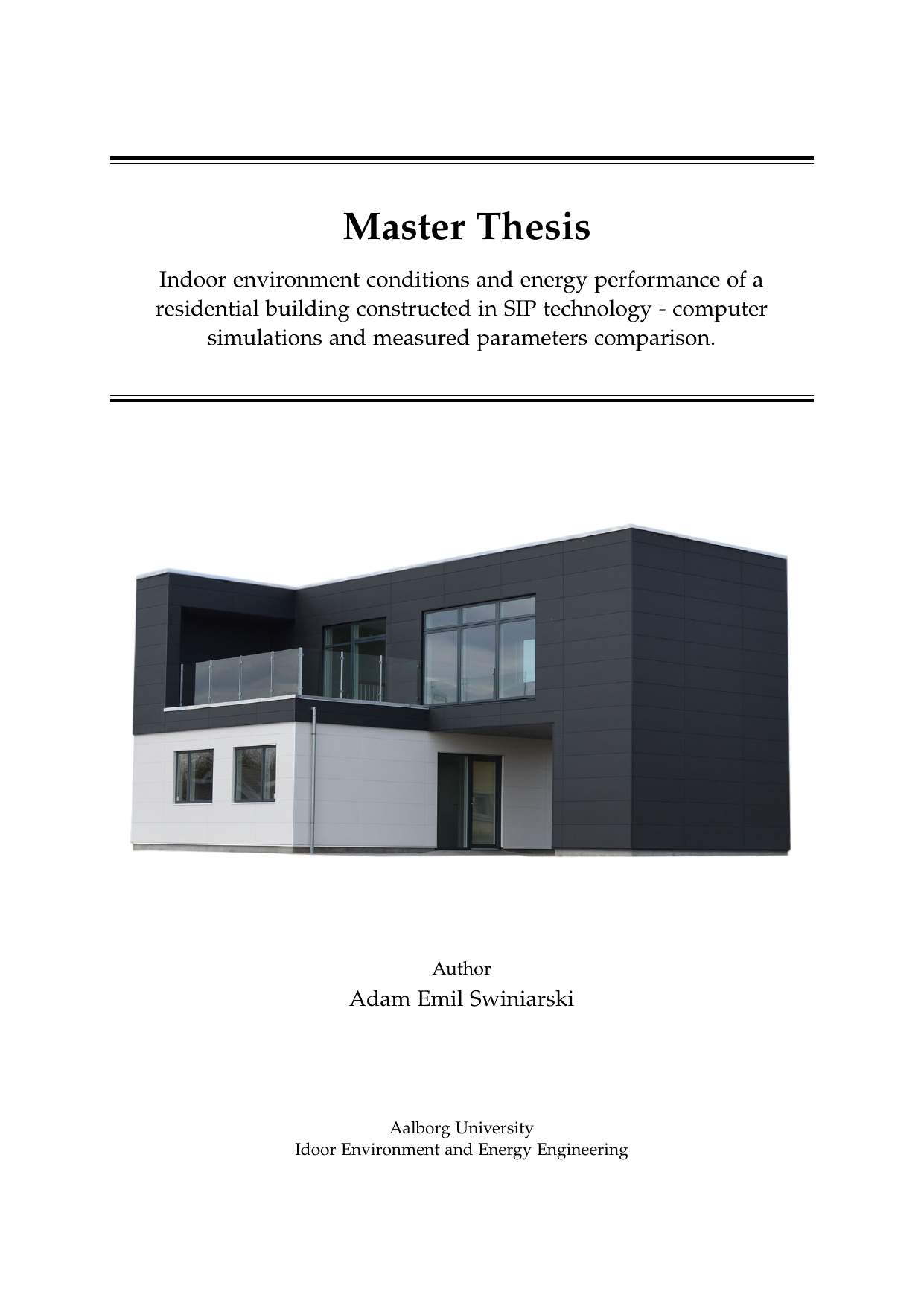
Indoor environment conditions and energy performance of a residential building constructed in SIP technology - computer simulations and measured parameters comparison.
Translated title
Indeklima og energiforbrug i en boligbygning bygget i SIP teknologi - sammenligning af målte parametre og computersimuleringer.
Author
Term
4. term
Publication year
2018
Submitted on
2018-06-07
Pages
148
Abstract
Hovedemnet for dette projekt er en undersøgelse af korrelation mellem simuleringer og målinger af indeklimaet i et hus opført i sandwichpanelteknologi. Bygningen der undersøgelses er Prøve Huset i DC-System Insulation A / S. Afhandlingen er udviklet i samarbejde med dette firma. Det indeholder detaljerede varmeoverførselsberegninger realiseret ved hjælp af COMSOL Multiphysics software med yderligere analyser af tredimensionelle dynamiske modeller (sammenligning med termisk billeddannelse). Derudover er der foretaget målinger af materialeegenskaber og vejrforhold for at give præcise inputdata til BSim-simuleringer, som er kernen i denne afhandling. De værdier, der hentes fra programmet, er blevet konfronteret med evaluering af rumtemperaturer og absolut vandindhold inde i selve bygningens vægkonstruktion. Endelig er inputvariationer og følsomhedsanalyser af beregningsmodellen blevet udført for at identificere de mest indflydelsesrige parametre.
The main topic of this project is an investigation of correlation between simulations and measurements regarding indoor environment in a house erected in sandwich panels technology. The building under the study is the Test House of DC-System Insulation A/S. The thesis was developed in cooperation with this company. It includes detailed heat transfer calculations realised with use of COMSOL Multiphysics software with additional analyses of three-dimensional dynamic models (comparison with thermal imaging). Moreover, materials testing and weather conditions measurements have been conducted to provide precise input data for BSim simulations which are the core of this thesis. The values retrieved from the program have been confronted with evaluation of room temperatures and absolute water content inside the wall construction of the actual building. Lastly, input variations and sensitivity analysis of the computational model has been performed to identify the most influential parameters.
Keywords
Documents
